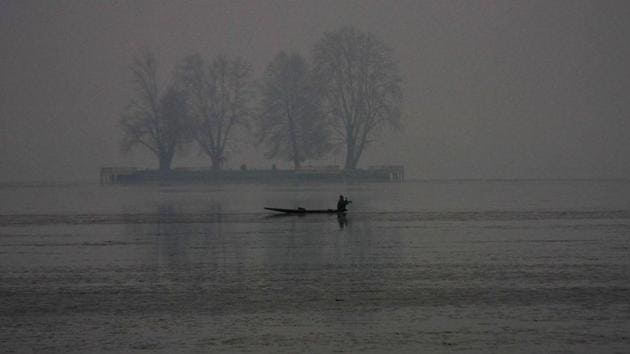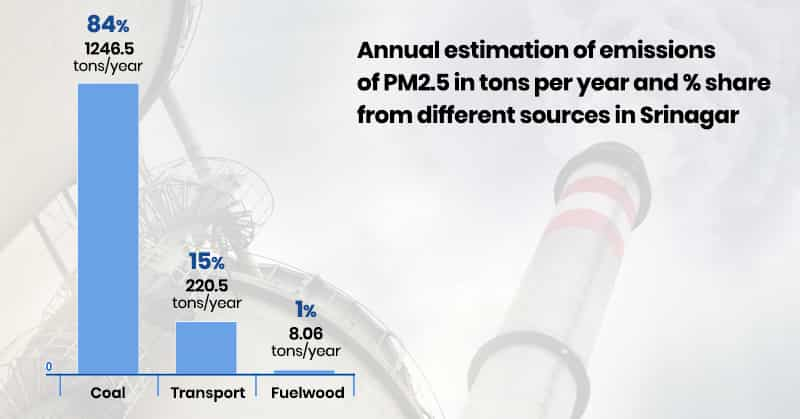Srinagar air quality worse than Delhi’s on some days, use of coal to blame: Study
Increased usage of domestic coal during winter accounts for 84 per cent of harmful emissions, says study
Pollution in Srinagar, the summer capital of Jammu and Kashmir, hit a dangerous level during winter when tiny particulate matter was recorded five times more than the permissible limit mainly due to the use of coal for domestic purpose, a new study has said.

The study by Indian Institute of Tropical Meteorology (IITM), Pune in collaboration with University of Kashmir found PM 2.5 levels in winter touched 348 μg/m³ in 2013-2014 with the permissible limit at 60 μg/m³ and that domestic coal usage accounts for 84% of the emissions, followed by the transport sector and fuelwood burning.
Particulate matter PM 2.5, about 30 times finer than a human hair, can be inhaled deep into the lungs, causing heart attacks, strokes, lung cancer and respiratory diseases.
“The high altitude destinations around the world are perceived to have a clean environment. They become preferred places for tourist attractions. However, such places are slowly found to be environmentally degrading due to ever increasing tourists and associated emissions,” the study published in Scientific Reports earlier this week said.

The authors analysed data collected between May 15, 2013, and April 20, 2014, and found that in the other three seasons, summer, autumn and spring, the PM 2.5 levels were within the permissible limits. However, in winter they consistently breached the standards.
“On some days air pollution in Srinagar is worse than air pollution in Delhi,” Gufran Beig, a scientist at the Indian Institute of Tropical Meteorology (IITM) and one of the authors of the study, said.
Though spring and autumn in the Kashmir valley are also chilly, residents use conventional sources for mostly warming water but not for indoor and outdoor heating.
The state is heavily dependent on hydel power and during winters when the rivers freeze power supply is disrupted forcing people to resort to conventional sources like coal.
“The usage of biofuels and enhanced emission peaks in the winter and mostly remains the same with little variability amongst the winter months,” the study said.
A rapid pace of urbanisation, the concentration of economic activity and biofuel use were the main contributors to air pollution in Srinagar, the researchers found.
Apart from biofuel emissions, the research also identified westerly winds flowing from Afghanistan as a major source of PM 2.5 pollution.
Srinagar is not the only tourist destination in north India that has reported high pollution levels in recent years.
Even for Jammu city, the average PM10 levels in 2015 were twice the national standard, according to a recent Greenpeace India report. The report also found that Dehradun in Uttarakhand was one of the most polluted cities in India in 2016, with average PM 10 levels at 238 μg/m³.





